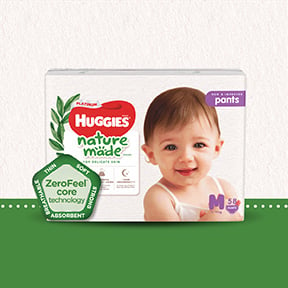Breastfeeding Benefits, Tips & Myths
Don’t believe these unfounded breastfeeding myths and continue giving your baby breast milk!
There are a lot of misconceptions about breastfeeding that many new mothers may believe in. This may often result in a lower breastfeeding rate as more and more mothers switch to formula. Learn the truth about these breastfeeding myths and why you should not let them influence your choice to breastfeed your baby.
1. Breastfeeding really hurts and this is normal.
Breastfeeding may initially be uncomfortable but it should not hurt. If some tenderness is felt, it is only temporary and should only last for a few days or until the mother gets the hang of breastfeeding. If breastfeeding your baby is really painful, , you may be suffering from an infection or your baby may not be latching on properly. Talk to a lactation consultant who should be able to quickly diagnose and fix the problem for you.
2. A breastfed baby requires extra water especially with the warm weather in Malaysia.
Breast milk contains more than 87% water so extra water isn’t needed. Offer your baby more breast milk on hot days. You really don't need to supplement breast milk with anything else for the first six months.
3. Breastfeeding with inverted nipples is impossible.
Because an inverted nipple doesn’t protrude, breastfeeding may be difficult… but NOT impossible. While it’s best to get the advice of a lactation consultant early on if you have inverted nipples, here are 3 things you can do to help yourself.
1) Grasp your nipple and roll it between your thumb and index finger for 30 seconds and then touch with a cold cloth just before feeding. 2) Pull back on the areola just before you latch your baby on. 3) Use a nipple shield. This is made of thin, flexible silicone with holes at the end that fits over your nipple during feeding and helps draw out an inverted nipple.
4. Moms taking medication can’t breastfeed.
While it’s true that some medications shouldn't be taken by a breastfeeding mom as it could pass into her breastmilk, this can easily be remedied in some cases by simply changing the medicine. .All you need to do is tell the doctor that you are breastfeeding and ask for the safest option available.
5. Formula milk is the same as breast milk.
Among all the many breastfeeding myths, this is the one that’s most debated. But no formula can ever surpass or equal breast milk with its complex makeup of nutrients that are perfectly suited for baby. Formulas don’t have antibodies, enzymes or living cells that make babies’ immune system strong.
6. Some women don’t produce enough milk.
This is one of the most popular breastfeeding myths that mums who have problems with breastfeeding early on are often made to believe. It’s a fact that women are able to produce more than enough milk for their babies. However, you do need to know how to properly latch your baby on and how to correct an improper latch. Even if your supply falls with a proper latch for whatever reason, you can always try power pumping with a breast pump to boost your production. Your body will always provide enough milk for your little one – it just might need a little help sometimes.
7. Breastfeeding ties the mother down.
Breastfeeding is actually a lot less hassle than formula feeding. There’s no need to lug around baby bottles, milk formula and water. Nothing needs to be sterilised. Anytime and anywhere, your baby can be breastfed. Even if you are going back to work or will be away from your baby for a period of time, you can pump in advance and store your breastmilk.
8. A breastfeeding mother won’t know if her baby had enough milk.
Just because a marked feeding bottle isn’t used doesn’t mean that a mother won't know if her baby has had enough breastmilk. As long your breastfed baby is consistently peeing and pooing and steadily gaining weight, you can be sure that he or she is getting enough milk.
9. “I have small breasts, I cannot breastfeed.”
Breast size doesn’t have any relation to your ability to breastfeed. In fact, some women with small breasts may even produce more milk than others with larger breasts!
10. Breastfeeding women need to eat a lot to keep producing milk.
Overeating isn’t recommended for breastfeeding. They just need to maintain a balanced diet and listen to their bodies. On average, a breastfeeding mum needs 300-500 calories per day above what was needed to maintain her pre-pregnancy weight. As for fluids, there’s no need to force yourself to drink anything more than you normally would. Listen to the signals from your body and drink to satisfy your thirst.
Do you know that an average baby will need 1057 nappy changes in the first 6 months? Get exclusive promotions and free diaper samples by joining the Huggies Club now!
"The information contained in this site is for informational purposes only and is not intended to be a substitute for professional medical advice, diagnosis or treatment. Always seek the advice of your doctor or other qualified healthcare provider with any questions you may have regarding a medical condition. You should never delay seeking medical advice, disregard medical advice or discontinue medical treatment because of information on this site. To the extent permitted by law, Kimberly-Clark excludes liability or responsibility for claims, errors or omissions on this site, and may amend material at any time without notice."













